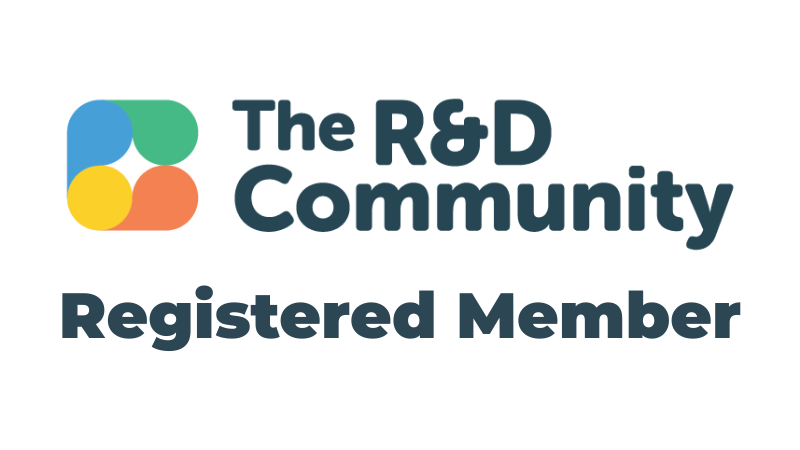What R&D records and data do I need to keep to make a claim?

Keeping the right records is a crucial part of making a robust, defensible R&D tax credit claim. At the time of writing (July 2025), there is no official HMRC template or mandated format for R&D record-keeping. However, maintaining clear, consistent, and contemporaneous records can significantly strengthen your claim and reduce the likelihood of HMRC raising an enquiry.
Why record-keeping matters
Every company submitting a claim for R&D tax relief carries an evidential burden: you must be able to demonstrate that your work meets HMRC’s definition of R&D and that your cost calculations are accurate and justifiable.
While HMRC understands that first-time claimants may not have comprehensive systems in place, they will still expect you to provide documentary evidence to support:
- Why the work qualifies as R&D
- Who was involved and how their time was allocated
- How the relevant costs have been calculated
Read HMRC’s definition of R&D for tax purposes.
What if I’m claiming for the first time?
You don’t need perfect records to make a first claim but you do need to show that you’ve made careful, reasoned assessments.
Even if your team hasn’t used R&D-specific timesheets, other forms of documentation may help evidence your claim. This might include:
- Project plans and technical documentation
- Emails or Slack messages showing how challenges were tackled
- Time allocation summaries for relevant employees
- Budget or cost centre reports tied to R&D activity
- Board reports or internal review documents outlining progress
Over time, HMRC expects your record-keeping processes to improve. Building better internal systems not only strengthens your position during any future enquiry, but also helps maximise the benefit you can claim.
What kind of records are most useful?
The best systems are the ones that work for your business. Timesheets can be effective but only if your team understands how to accurately log qualifying R&D activity (not just day-to-day tasks). Other valuable sources of evidence include:
- Milestone trackers and Gantt charts
- Version-controlled design or code repositories
- Meeting minutes that discuss technical uncertainties
- Internal funding or resource approval documents
What matters most is that your records are:
- Contemporaneous – created at the time of the activity, not after the fact
- Consistent – aligned with your financial data and cost calculations
- Credible – detailed enough to demonstrate how and why the work qualifies
Real-world examples of effective R&D record-keeping
📍 Digital manufacturing start-up – no formal timesheets, but strong project comms
A design-led manufacturing SME was making its first R&D claim and didn’t have dedicated timesheets. However, the team worked collaboratively on a shared project board (Trello) where each stage of development was logged, discussed, and assigned to specific individuals. By exporting this data and mapping it against payroll and technical reports, the adviser was able to evidence qualifying activities and time spent. HMRC accepted the claim without enquiry.
Key takeaway: Contemporaneous records don’t need to be complex, they just need to be consistent and credible.
🧪 Pharma-tech company – strong technical evidence, but weak cost attribution
A pharmaceutical technology firm had detailed lab notes and experiment logs but lacked documentation showing how staff costs were allocated to each project. With adviser support, they reconstructed time estimates by reviewing digital lab logs, calendar appointments and interview notes. Going forward, they introduced a lightweight monthly time declaration process signed off by project leads.
Key takeaway: Technical evidence is important—but so is showing how R&D effort translates into claimable cost.
🖥️ Software consultancy – custom Jira tagging for R&D sprints
A software firm delivering bespoke platforms used Jira for agile project management. Their adviser helped them create a simple R&D tag and documentation rule for tickets involving technological uncertainty. This tagging was reviewed monthly by the tech lead and aligned with developer timesheets. When their claim was reviewed, HMRC highlighted this as a “clear and thoughtful approach to tracking qualifying activity”.
Key takeaway: Embedding R&D tracking into tools you already use can make compliance efficient and robust.
How an R&D adviser can help
A specialist adviser should take the time to get to know your business and understand how R&D activity manifests within your teams and projects. This allows them to:
- Clarify which activities and costs are likely to qualify
- Recommend record-keeping approaches that suit your workflows
- Help you prepare credible documentation to support your claim
An experienced adviser will also be able to provide examples of best practice, help establish clear roles and responsibilities internally, and support your ongoing compliance as the scheme evolves.
Related videos to this topic
How can we help?
Book a free consultation with our expert R&D funding advisors today. We specialise in helping innovative businesses like yours unlock millions in government funding, specifically allocated to fuel your innovation. Let us help your business access the support it deserves.


.svg)








